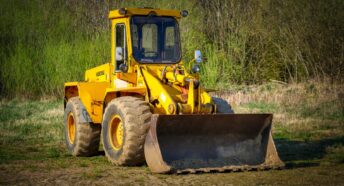Wealden District Update November 2021
CPRE Sussex activity in Wealden District
A great many people are now expressing their concern with regard to the amount of development in Wealden District. The 2013 Core Strategy, which was intended to shape development in the District to 2027, was based on a housing number of 450 dwellings per year, but this Strategy has not been reviewed by Wealden and is now deemed out of date.
This means that the housing number is now to be derived from the Government’s standard method, which for Wealden District, requires a very large increase to 1,225 dwellings per year.
A further drawback from an out-of-date plan is that those policies in the Core Strategy that could restrict housing permissions can be given a reduced weighting in the planning balance and the awful concept of the presumption in favour of sustainable development applies.
Thus, developments that conflict with Core Strategy policies and would therefore normally be refused permission can be accepted under the presumption. Developers and land promotors are therefore in the driving seat with the rules heavily weighted in their favour.
Wealden District Council has granted permission for all but one of the sites allocated in the Core Strategy for housing. A large number of other new sites that were included in the now withdrawn 2019 submission Local Plan have also been granted permission. Furthermore, other sites not in either the Core Strategy or the withdrawn plan have received permission. At the moment, there are about 8,000 dwellings with permission across the District that are yet to be built (about 11% of the total existing current housing stock).
In addition to this unbuilt 8,000, further large applications have been submitted or are likely to be submitted having requested screening opinions from the Planning Department. These larger proposals include 500 dwellings at Downlands Farm, 250 at Bird in Eye Farm and 450 at Horsted Pond Farm, all in Uckfield and 400 at Sharnfold Farm in Stone Cross, plus a further 250 to the south of the settlement.
However, dwarfing these proposals is the 2,500 dwellings being promoted by Grosvenor Group (part of Grosvenor Estate) in Arlington, to the north west of Hailsham, which would dramatically obliterate a large area of countryside both sides of the River Cuckmere. The developer appears to consider in their belated presentation to Arlington Parish Council that both Wealden District Council and the residents in this area should welcome this “much needed” development – we in CPRE would beg to differ.
Furthermore, a large number of smaller developments, typically 20 – 50 dwellings are being promoted in our villages but these are frequently disproportionate to the size of the settlement and would adversely affect the character of the surroundings and the quality of life of the residents. An example is East Hoathly, which is a small, historic village, where recently a development for 50 dwellings was approved to the south but then 205 to the north. Clearly, this amount of growth, which will double the size of the village, cannot be assimilated without drastically changing the rural nature of the village.
Wealden District Council planning officers continue to support the vast majority of applications despite most of these receiving many, many objections from local residents. However, there are signs that both planning committees are now no longer prepared to tacitly follow the officer recommendation to grant permission and are starting to refuse some applications.
But in early November, an application for 700 dwellings on about the last remaining green space between Eastbourne and Polegate/Willingdon was refused by the committee, upon which the chairman invoked a bizarre facility in the Constitution to refer the application to the other planning committee for clearly what was hoped to be a different decision.
Wealden District Council is currently preparing a new Local Plan which they anticipate having a draft ready for consultation next Spring. We expect that this plan will include a minimum of 25,000 new dwellings over a 20-year period which represents a 35% increase in the number of houses across the District. This rate of increase is going to be a step change – over the last 20 years, 9,579 new dwellings have been provided at an average of 479/year. Due to our rural heritage, very little land is classified as brown field in Wealden District meaning that the vast majority of these 25,000 dwellings will be on greenfield sites.
You may have read recently that Wealden District Council’s Leader, together with other Sussex local authority Leaders, have lobbied the Government to moderate the number of dwellings that authorities are required to plan for. On the face of it, this is good news, but coming soon after the result of the Chesham and Amersham by-election, which was lost because of concerns regarding too much development, we wonder whether as far as Wealden District is concerned, the lobbying is merely a façade.
When the new draft plan is published it will become apparent whether Wealden District Council is really concerned about over-development or not – if the plan contains a housing number considerably less than the 1,225/year, then their concern is real, if not, then the over-development will continue. To date, unfortunately none of Wealden District Council’s actions indicate that they are trying to restrict development.
Whereas the government appears to be having second thoughts on its proposals aired in summer 2020 in its Changes to the current planning system consultation and Planning for the Future White Paper and the “mutant algorithm” thankfully looks to have disappeared. But it is the existing rules that require Wealden District Council to plan for 1,225 dwellings/year and it is these rules that need to be changed to prevent the urbanisation and loss of our rural surroundings.
We in CPRE Sussex will continue to object to unsuitable green field developments, but you, our members and supporters can do so much to help address the ongoing overdevelopment by lobbying your local councillors and MP. It was public opinion that resulted in the government drawing back from their proposals to increase the housing numbers even further.
But the current method requires the use of the well out of date 2014 Household Projections as a starting point for calculating the housing requirement despite the projections for 2016 and 2018 being available that show a reduced requirement. Furthermore, in most districts, the figure derived from the projections is then increased by 40% in an attempt to flood the market resulting in a fall in house prices. But this fall is a pipe dream, developers only build at a rate whereby they can sustain their chosen selling price, if this becomes difficult to achieve, they slow the build rate until the price firms. Thus, it is the most profitable sites that get developed, which are normally the rural green field ones at the expense of the more suitable but less profitable brown field sites.
Sussex MP’s have been known to advise their constituents that planning matters are not within their gift as this is devolved to the Districts. This is an abdication of their responsibilities and they should be reminded that the Districts follow the rules – the National Planning Policy Framework and National Planning Policy Guidance – provided by government for which MP’s have a major part to play.
Therefore, if you are unhappy with the amount of new building on greenfield land, please lobby your Councillors and MP to arrive at a lower, more sustainable housing number that will be less destructive of our precious rural surroundings.




